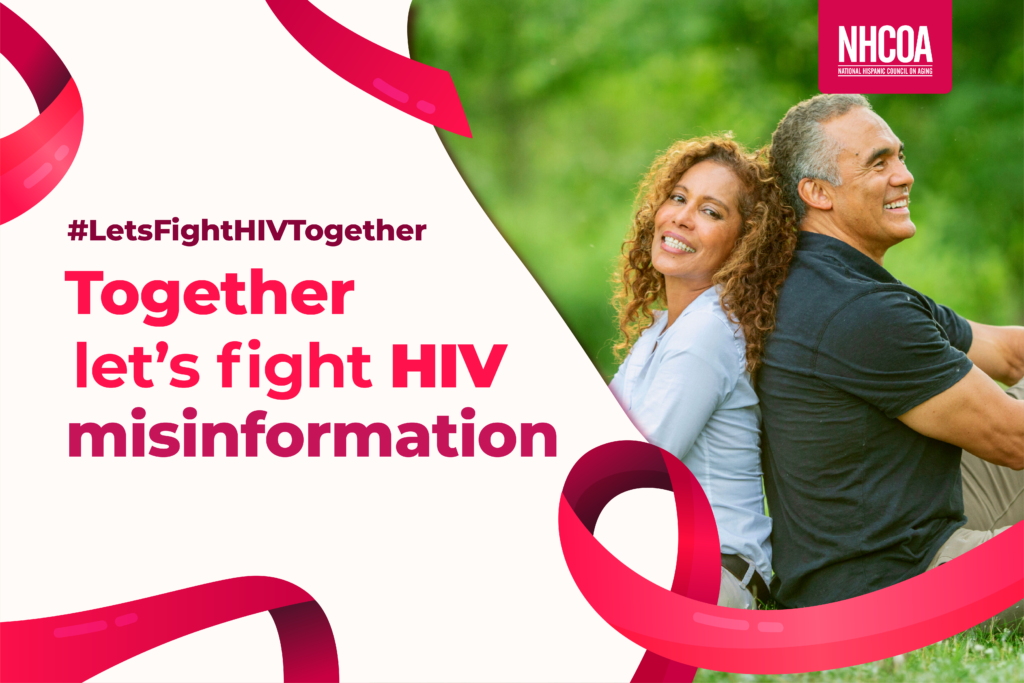
About 3.6 million of the 35.6 million people currently living with HIV are aged 50 or older. Part of the reason is that treatments have been improved and are helping people with the disease live longer, allowing people to get diagnosed and treated earlier. Although most of them were diagnosed with HIV when they were younger, thousands of older adults get HIV each year.
HIV (Human Immunodeficiency Virus) is a virus that damages and weakens the immune system, which is the system the body uses to fight infection and disease. Having HIV puts a person at risk for other life-threatening infections as well as certain types of cancer.
When the body can no longer fight against infections and some other diseases, HIV can lead to a serious illness called AIDS (Acquired Immune Deficiency Syndrome). When someone has AIDS, they are more likely to develop infections and be more vulnerable to unusual types of cancer and other serious illnesses. However, with early and uninterrupted treatment, it is possible for a person with HIV to never develop AIDS.
While it is true that we hear a lot about HIV and AIDS, it is also true that there is still a lot of misinformation on the subject. The lack of information about the disease and its spread in general, and our interest, in advanced age, becomes a threat to the timely treatment of the disease and leads to stigma and a lot of confusion among the population.
In many cases, it is believed that these diseases are not a problem and that only younger people need to worry about them. Yet it is important to acknowledge that anyone at any age can get and transmit HIV/AIDS. We are talking about a real risk at any stage of a human being’s life and it is a disease that has specific connotations that can influence different aspects of the individual’s development, such as psychological, economic, social, family, etc.
Signs of HIV/AIDS can be confused with the aches and pains of normal aging. Older adults may be dealing with other diseases and illnesses without any suspicion.
Even when the disease is under good control, people with HIV can develop aging-related disorders at an earlier age. HIV and its treatment can also affect other parts of the body, such as the brain and heart. For example, people with HIV are significantly more likely to develop cardiovascular disease than people who do not have HIV. Older people who have HIV also have a higher risk of developing dementia.
On the other hand, some older people may be embarrassed or afraid to get tested and in many cases, doctors do not normally test older people for HIV. When the older person is finally diagnosed, the virus might be in later stages and is more likely to progress to AIDS.
It is important to get regular general medical check-ups from an early age in order to have a timely diagnosis of any disease and, additionally, request tests at least once a year to discard the infection. In addition, it is necessary to take responsible care of ourselves in order to avoid the spread of sexually transmitted diseases. For this, there are barrier methods such as male and female condoms, which are the most effective in these cases.
Since 1988, World AIDS Day has been celebrated every December 1st as a worldwide pledge to support global efforts to prevent new HIV infections and increase awareness and knowledge about the virus. Each year a slogan is chosen to guide efforts during the year of observance and in 2022, the slogan “Equality Now!” was chosen.
In this regard, WHO called on world leaders and citizens to recognize and courageously address the inequalities that hinder progress toward ending AIDS. Ensuring equal access to essential HIV services. From our roles as citizens, we can contribute to the battle by protecting and informing ourselves as much as we can to avoid stigma and misinformation around the issue.
References:
El VIH, el SIDA y las personas mayores | National Institute on Aging (nih.gov)

Recent Comments